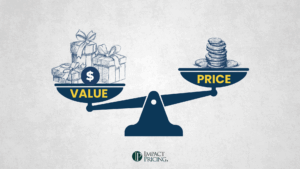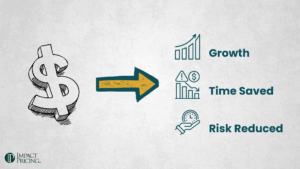The most important concept driving pricing is Willingness to Pay. If we knew the precise value for each customer, our pricing could be perfect. Of course, we don’t. So we make estimates. Many of us allow salespeople to negotiate prices with our buyers in an effort to get as much as possible from each one.
Sometimes salespeople tell us the buyer will only buy at some ridiculous price. Do we want the business or not? That’s a hard and scary question to answer. We don’t want to give away too much, but we don’t lose the deal. What should we do?
My recommendation is to create a Willingness to Accept (WTA). Some companies call this a floor price. It’s the lowest price you would ever accept for that piece of business.
You don’t have to tell your salespeople, otherwise, it might become the new price. But you should know it. Probably more important, you should know why. As you create your WTA, consider several issues.
Obviously, Finance cares if the margin is reasonable. Maybe you take a low-margin deal because it fills the factory and covers some of the allocated overhead. Maybe you don’t take the deal because the blended margin hurts what they report to investors.
The word may get out. If other salespeople know that you’ve accepted such a low price on one deal, they may assume they can get it for their customers. If that price was passed through a distributor, now a distributor knows what they can ask for in future deals. The problem with accepting a very low price on a single deal is that it soon becomes more than one deal.
How busy is your company? If you have a lot of excess capacity, it may make sense to win more low-margin business. However, if you’re pretty busy, accepting a low-margin price deal can hurt your business. While you are servicing this price-sensitive customer, you are taking away resources that could have been used to delight higher-paying customers, resulting in greater loyalty and repeat business.
There is no right or wrong answer here. However, consider changing your floor price as you become more or less busy. Raise it when you’re busy, and lower it a little when you’re not.
In the end, it’s a business decision. Make it wisely.















